Identification
Currently, the process of inserting central venous catheter is not suitable for emergencies.
Outcome
Cevec is a product system which enables paramedics to place a central venous catheter fast and safely by considering the special conditions of emergency situations.
Recognition
Exhibited at Global Grad Show 2019, Dubai, UAE
James Dyson Award 2018, National Winner Germany, International Top 20
Core77 Design Award 2018, Student Notable
IF Design Talent Award 2017

Research
Administering medication in emergencies
The starting point for the project were visits at the maritime rescue center and the ambulance service, where I spoke to rescuers on-site.
I became aware that giving and receiving medication during emergencies can be quite challenging due to the special conditions.
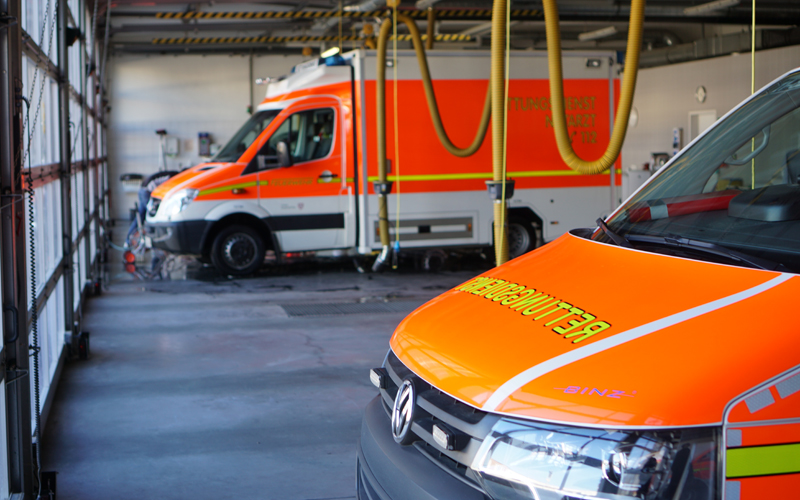
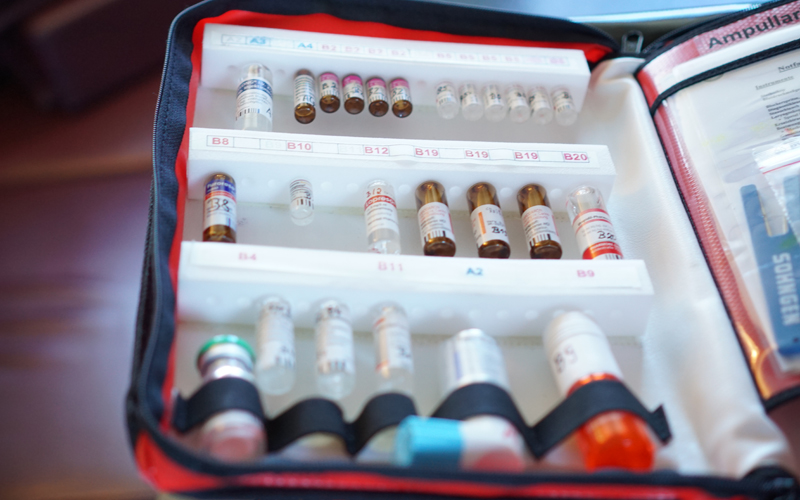
Identification
Special conditions
Inserting a catheter into a patient's vein is a common practice to administer fluids, medicine or nutrients, especially if other methods of giving medication are inapplicable. In some cases however, for example if a patient suffers from hypothermia, a (standard) peripheral venous catheter could harm the patient.
A central venous catheter, a thin tube which is placed into a person's large vein, could act as an alternative - particularly since the body quickly responds to medication given by central venous catheters. Nevertheless, current central venous catheterisation methods require many tools and the skills how to use them appropriately, which makes the standard application of a CVC not suitable for emergency settings.
Insights
Safety, time pressure and ease of use
I have identified these three factors to be determinant for the success of a product within this environment. Folllowing questions arose:
How to ensure a safe application in shaky settings (for example at sea)? How to facilitate one-hand usage? How to guarantee a sterile punctuation? How to make it easier to place a CVC for untrained paramedics? How to reduce time? How to reduce the number of tools needed?
Research at the hospital
Getting familiar with the Seldinger technique
I had the opportunity to learn how anaesthesists place a central venous catheter before surgeries at the University Hospital in Kiel. This method is called the "Seldinger technique". It was a very valuable experience for the further design explorations.
I understood that a lot of time is needed for preparation and post-processing of the procedure. Furthermore,using two hands allowed the practicioners to go quickly through the process. This handling might not be viable during emergencies, though: It might be desirable for a practicioner to be able to pause the procedure at specific points.
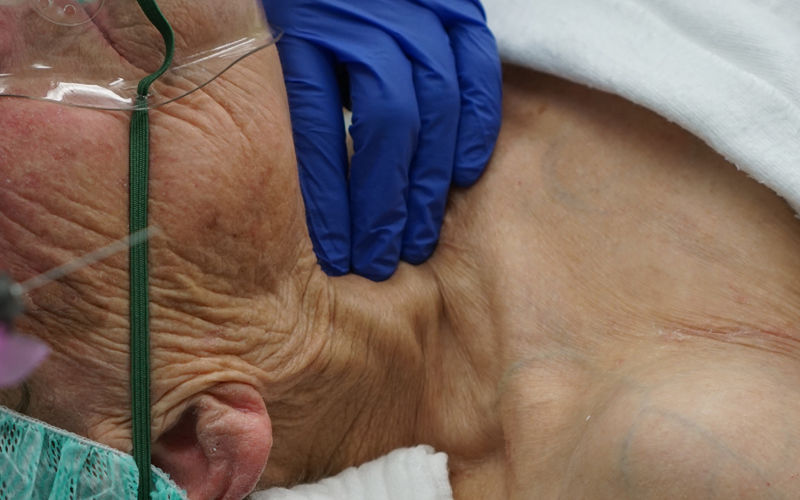
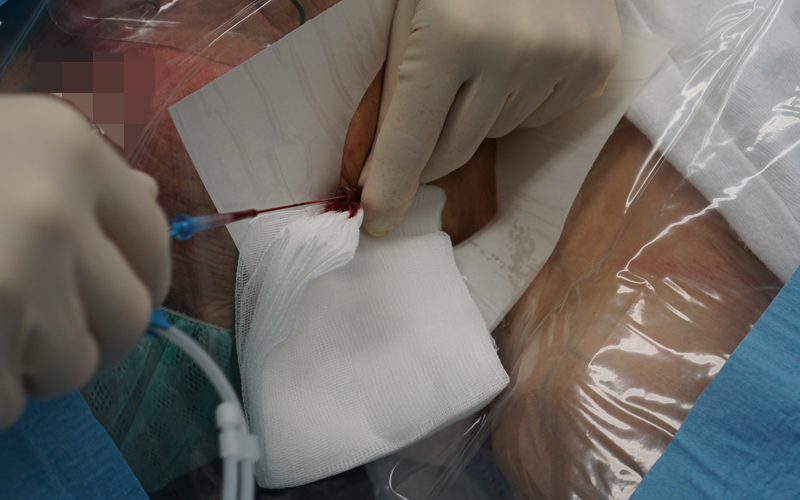
Design process
The design process is driven by testing several prototypes
In order to explore different directions of possible design solutions, I built a 1:1 foam model of a human neck with the correct head position: The head is rotated slightly to the left.
Starting with rather large prototypes, this foam model helped me to push my design proposal into a smaller, less obtrusive direction.
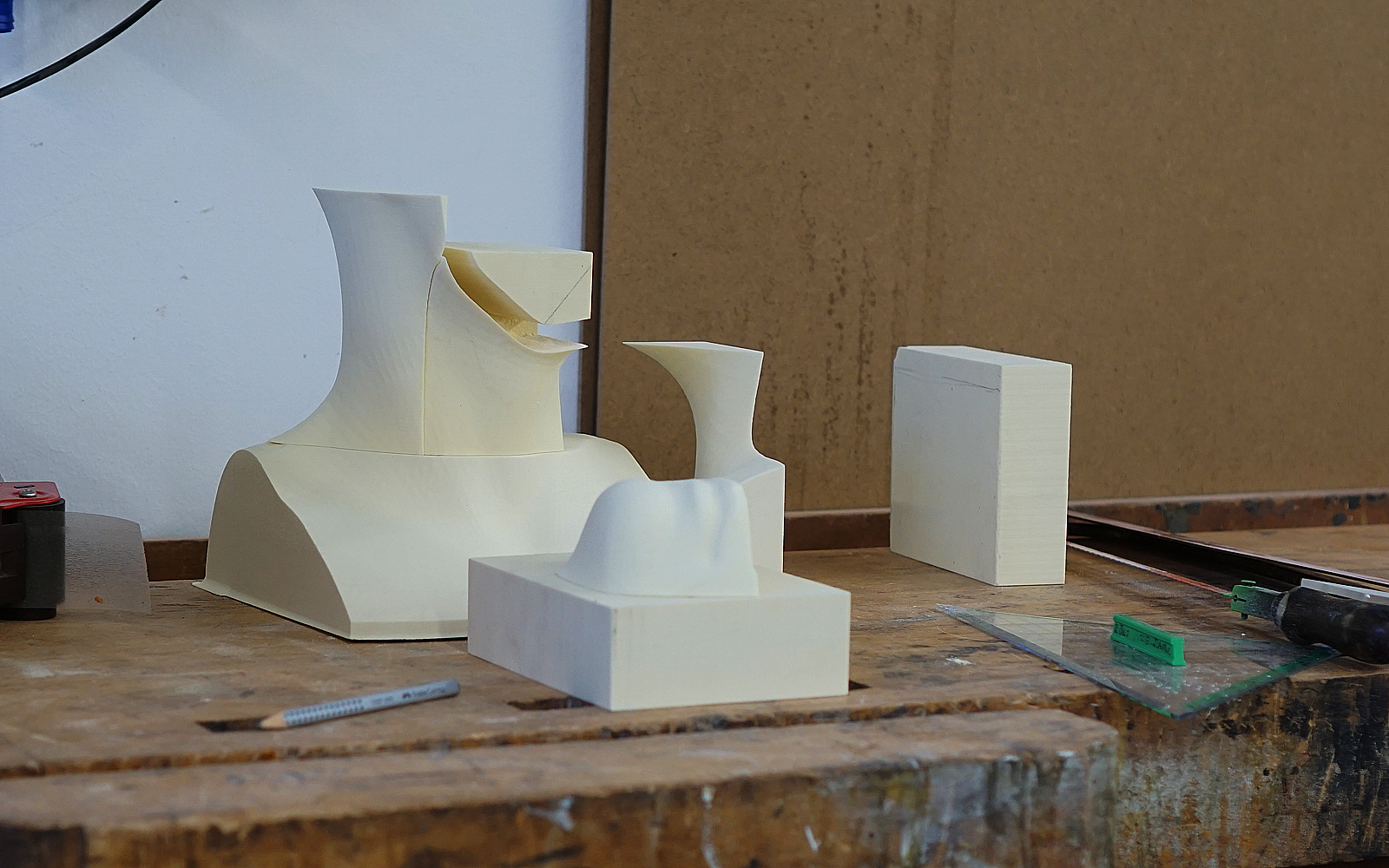
The foam model was CNC milled in different pieces

Testing prototypes
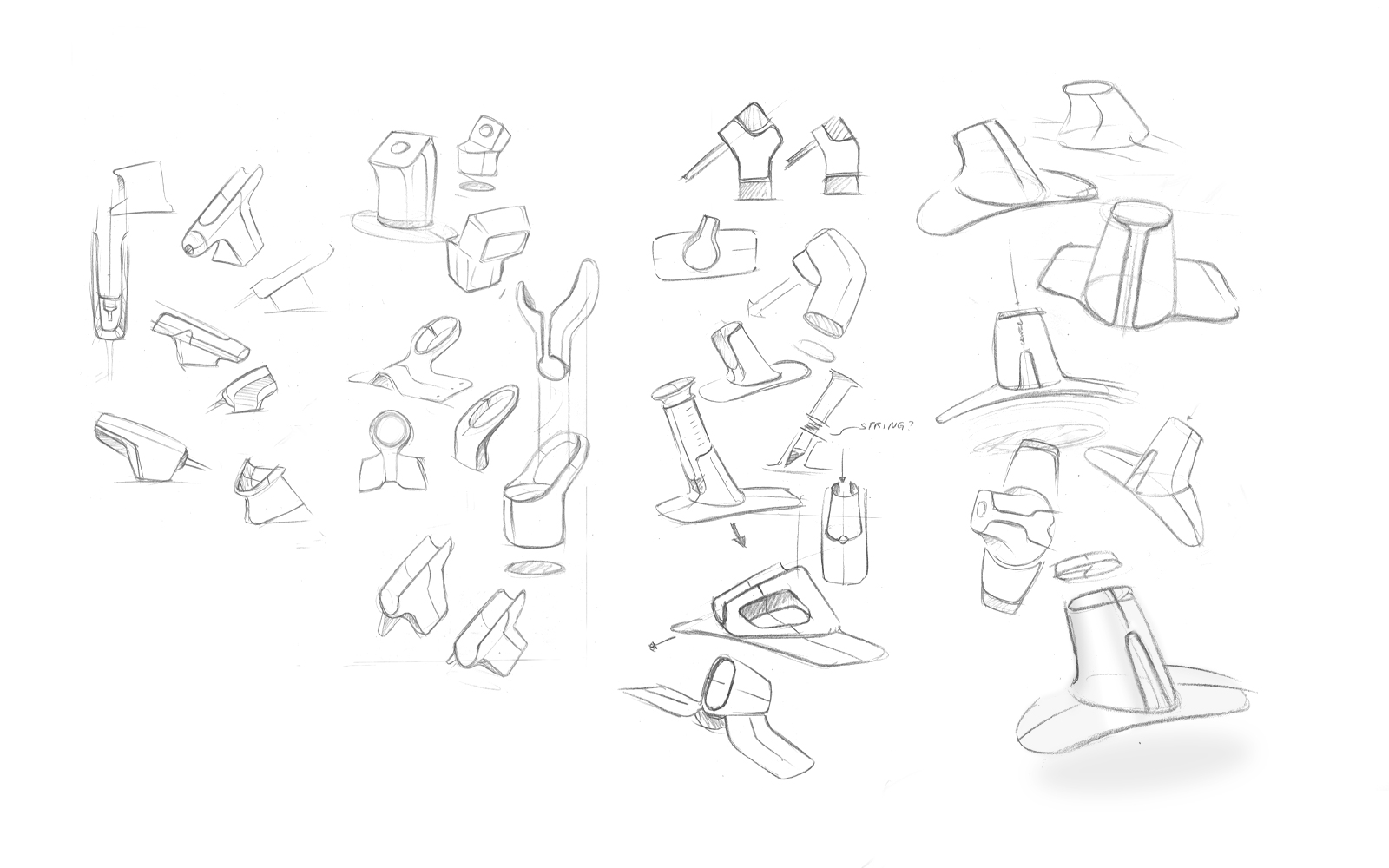
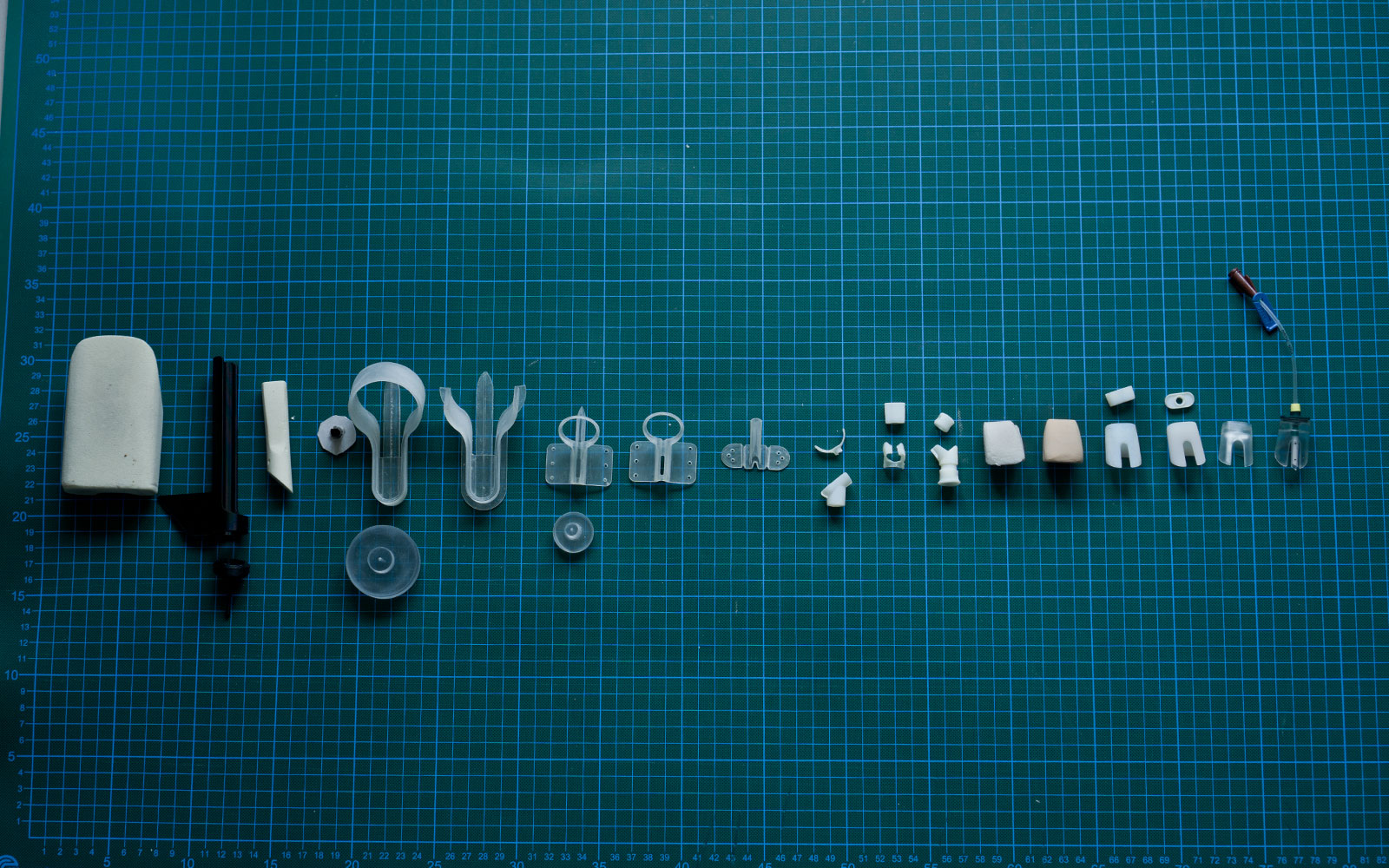
From first rough ideas to the final design
Result
Reducing time by reducing instruments
Cevec is a central venous catheterisation system which only consists of three instead of 6+ units. It combines functions of the standard method and makes use of flexible and adhesive materials.
This reduces the necessary steps and required tools to improve placing a central venous catheter in emergencies.
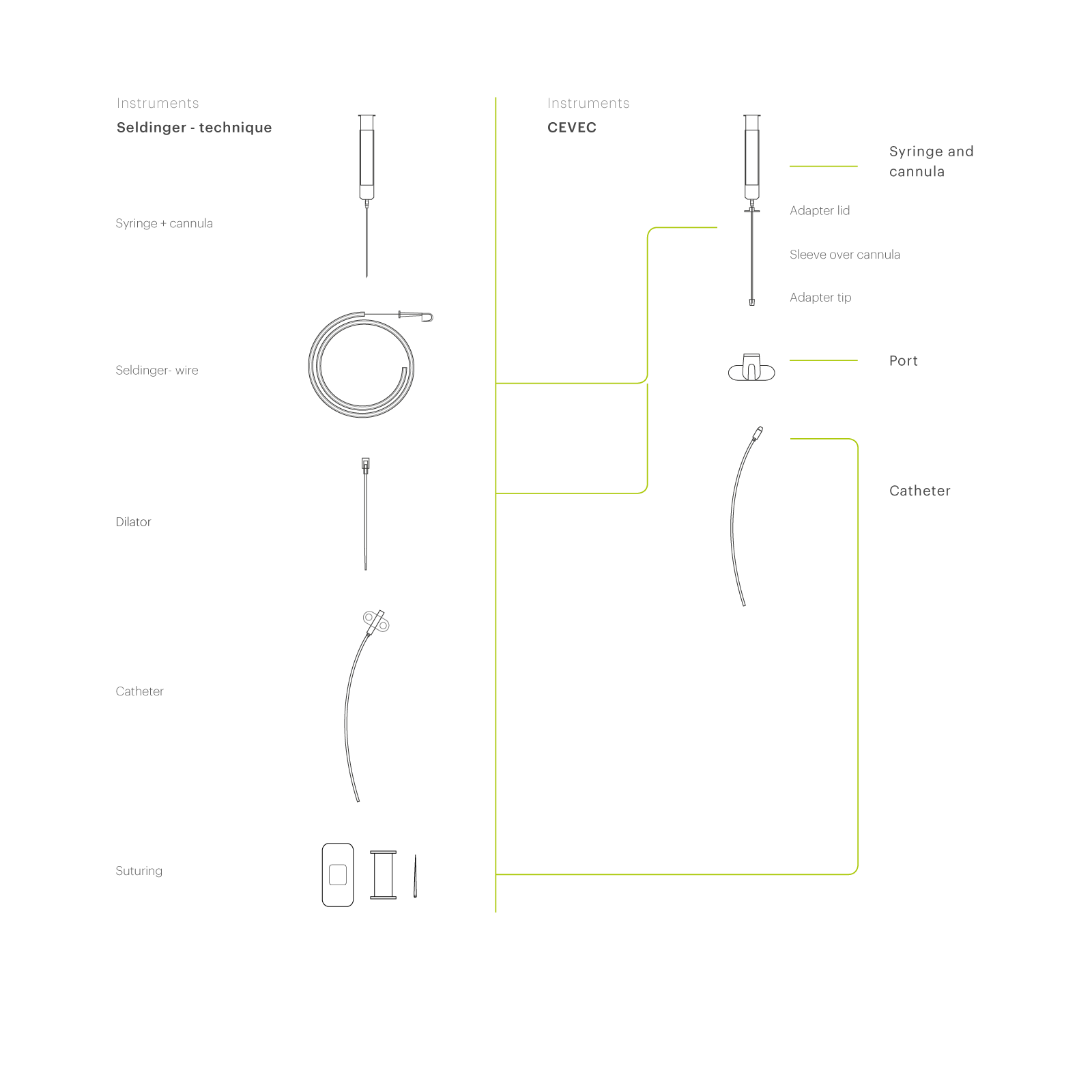
Result
Simplifying a fairly complex procedure
As soon as the paramedic has placed the port at the desired position, he or she can insert the cannula through the port. It features a 40 degree angle, which is recommended for the placement of a catheter into the internal jugular vein.
However, the flexible silicone allows to tilt the angle if necessary. After he or she has withdrawn the cannula, a guiding sleeve will remain in the vein. Then, the catheter can be advanced through this sleeve.
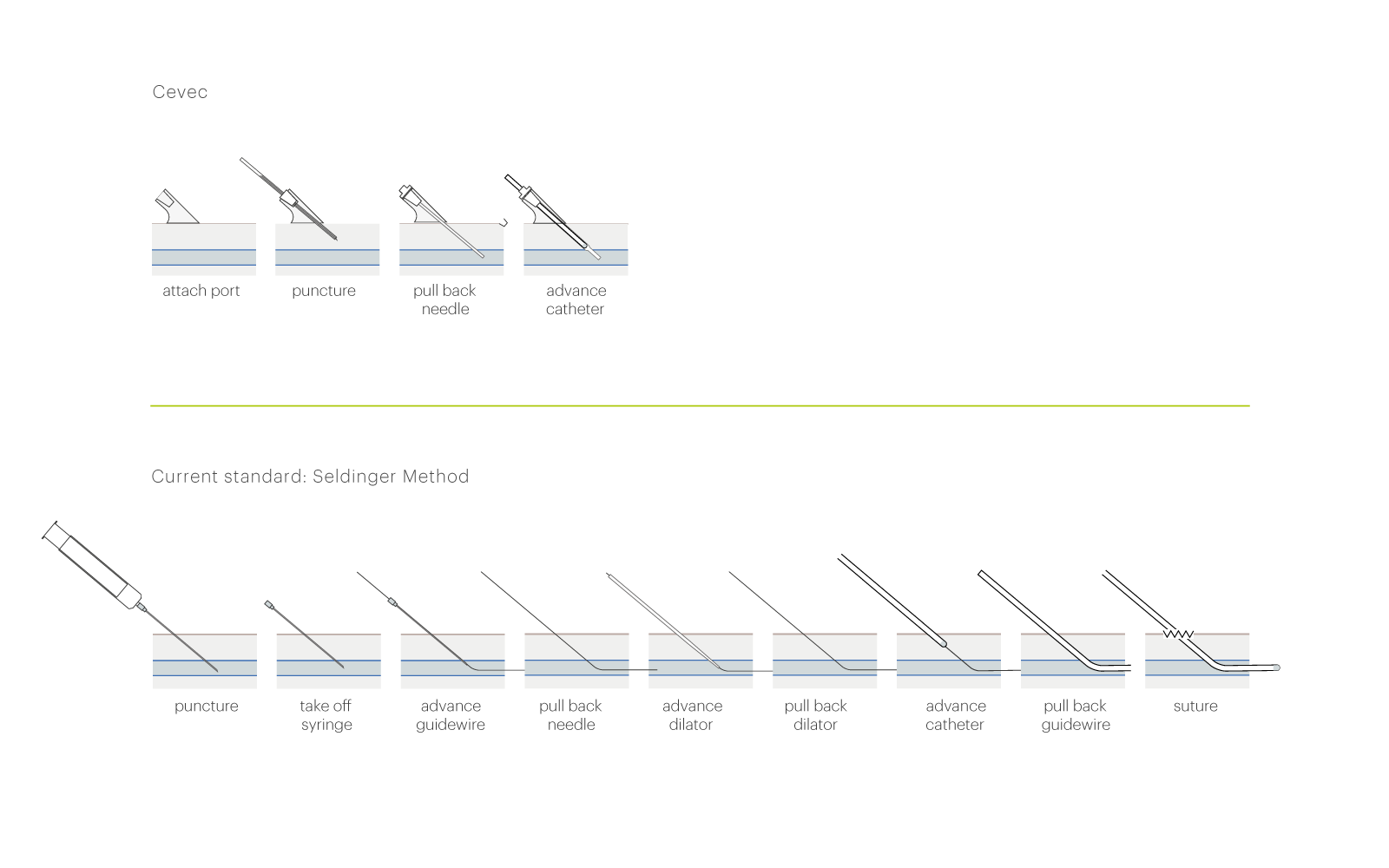

Result
Seperate steps, less time needed, no suture
The product system takes into account the special conditions of emergencies. Once the port is attached on the right position, the point of puncture (underneath the adhesive surface) will stay clean.
After the catheterisation is completed, the catheter can be screwed onto the adapter lid, which makes suturing obsolete. This also simplifies potential further steps related to the administering of medication.
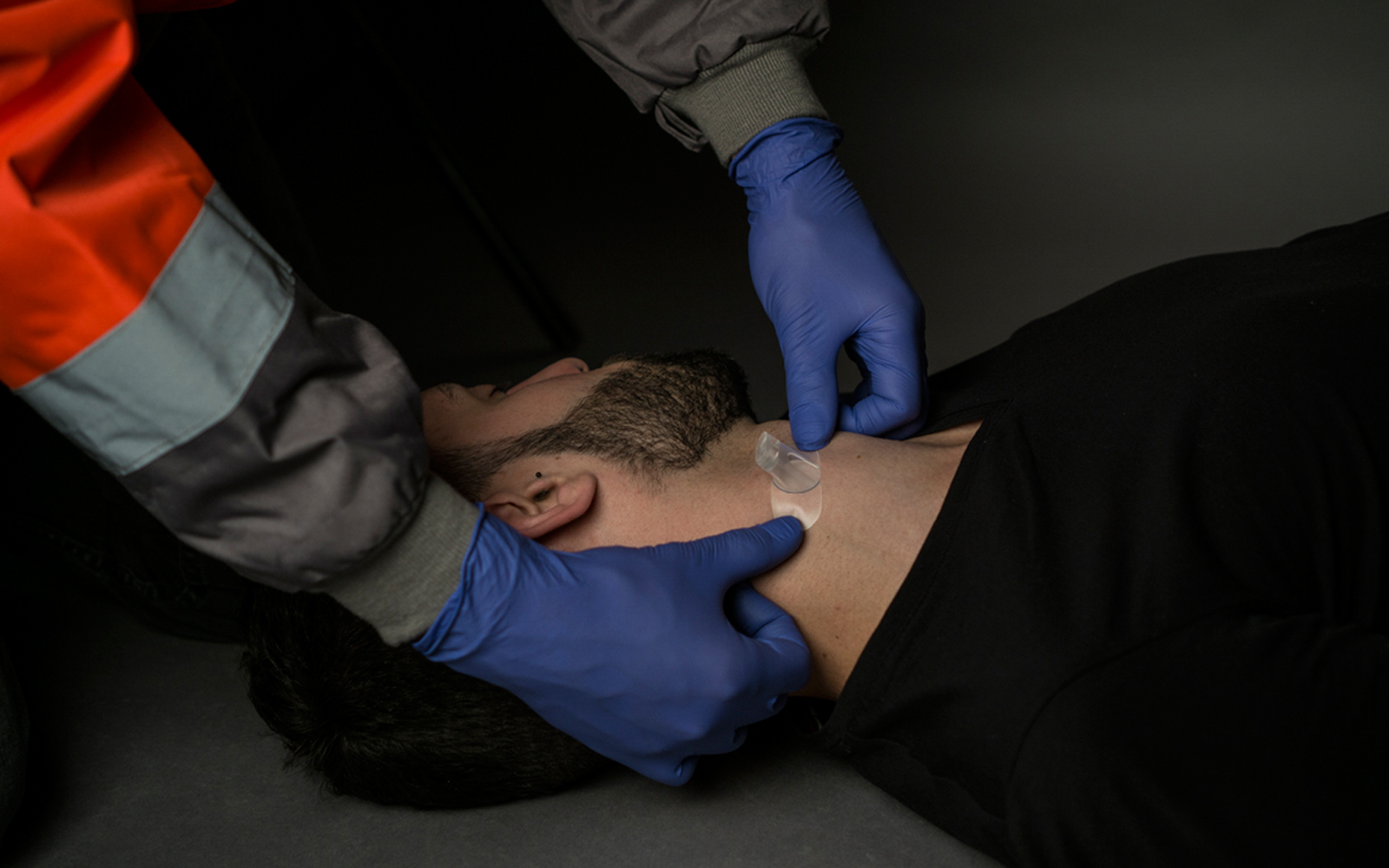
Step 1: The physician positions the flexible silicone port
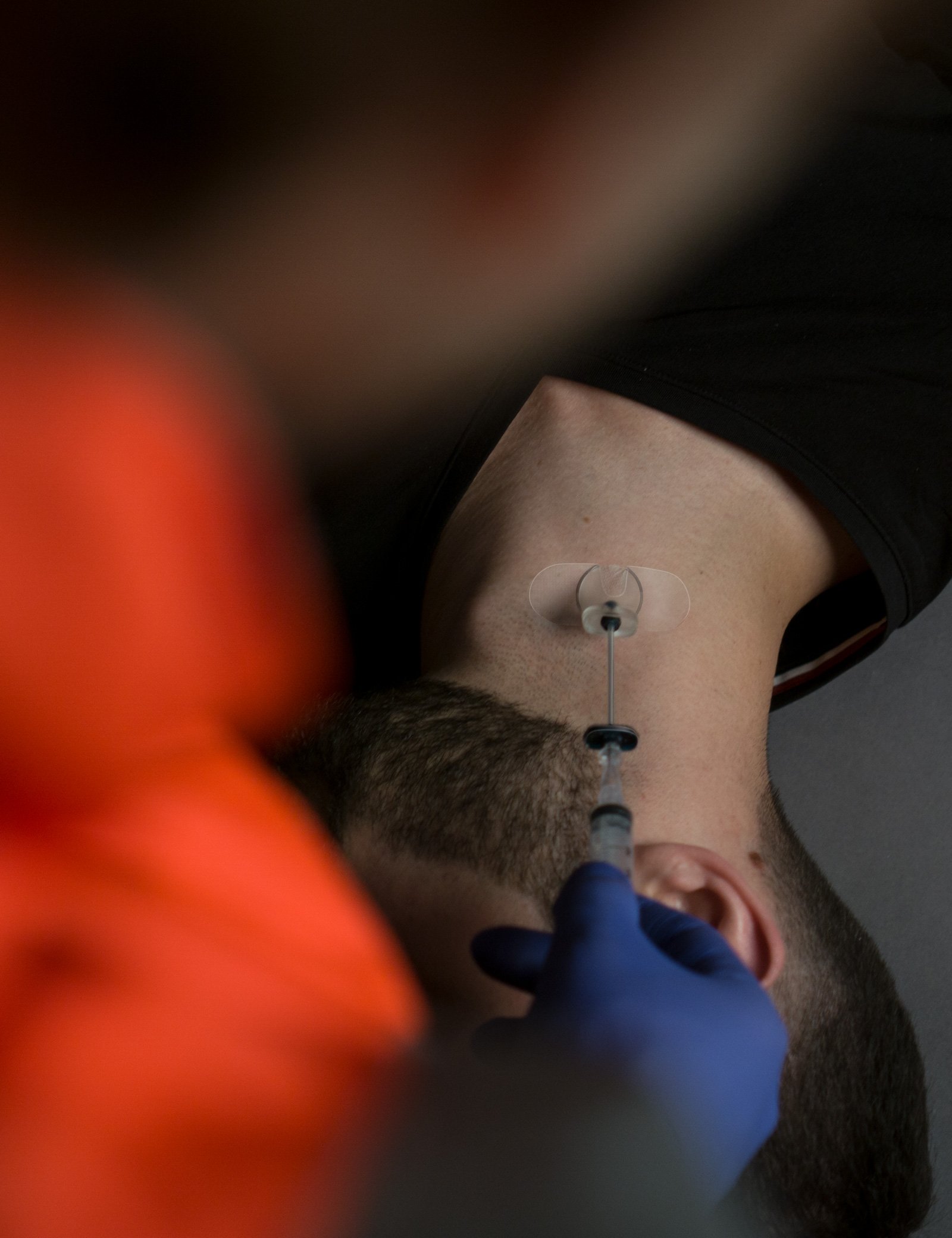
Step 2: The physician punctures, and the guiding sleeve stays inside the vein
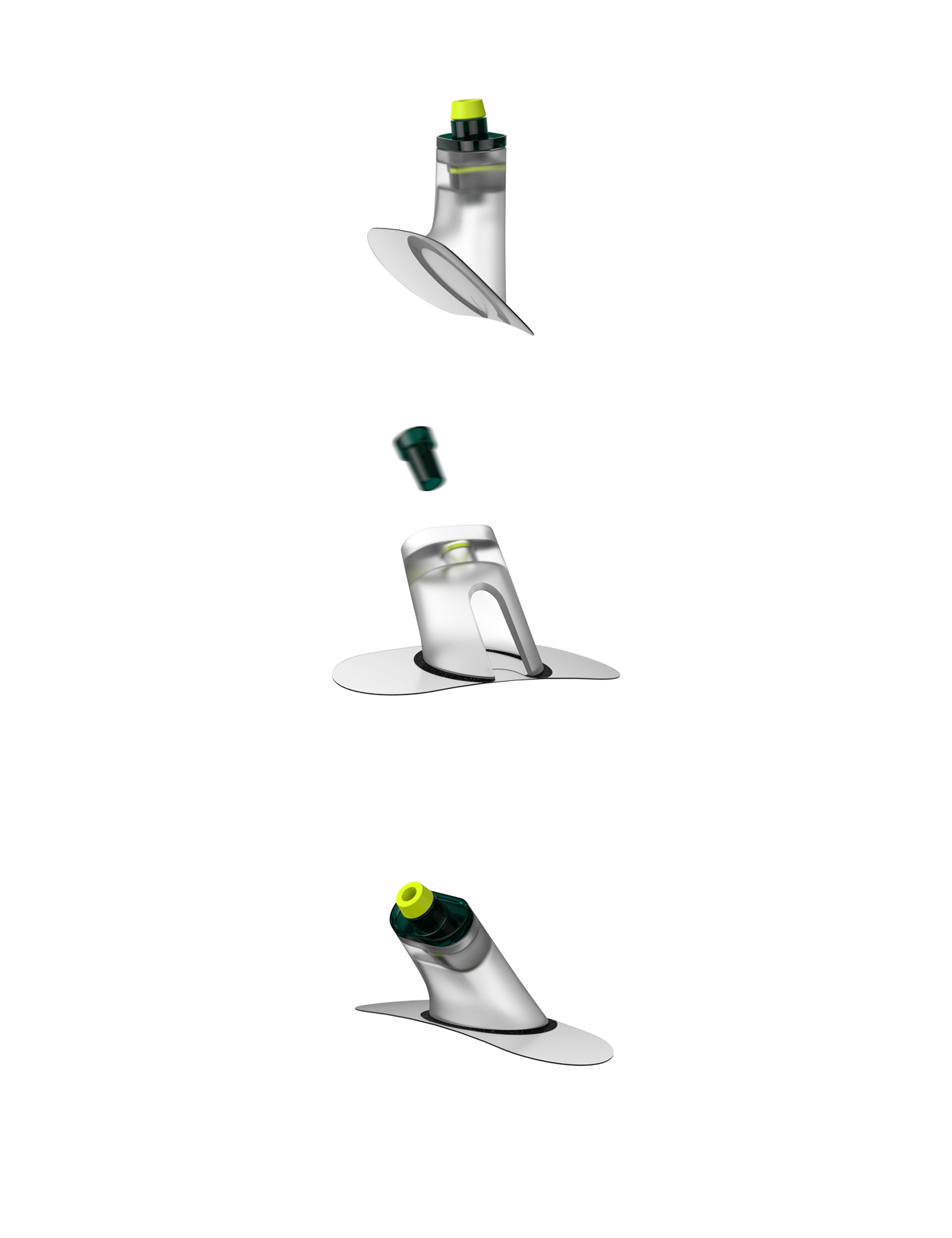
The adapter tip slides into the tunnel of the port
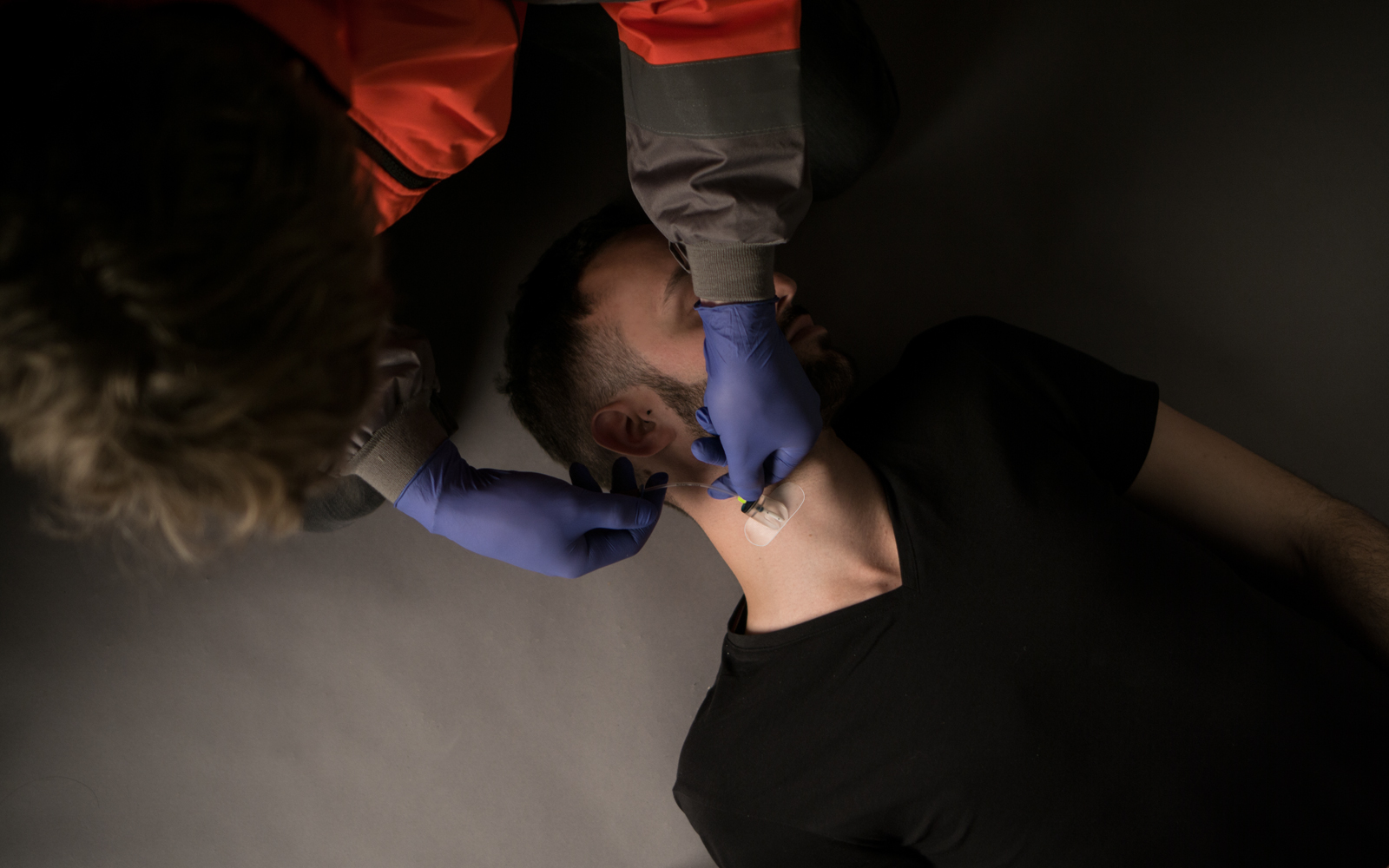
Step 3: The physician advances the catheter through the sleeve and screws the cap onto the adapter lid